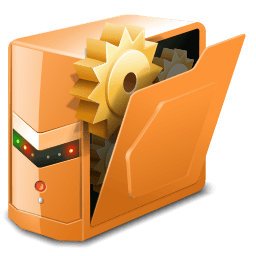Most Commented
Mobile Application Automation Using Appium




Description material

Last updated 1/2018
MP4 | Video: h264, 1280x720 | Audio: AAC, 44.1 KHz
Language: English | Size: 1.30 GB | Duration: 12h 22m
Step by Step Java, Helpful Practice Exercise, Android application automation using Appium
What you'll learn
Basic to advance level understanding of Java
Basic to advance understanding of mobile automation using Appium
Requirements
Basic understanding of Manual Testing
Basic understanding of Android and IOS
Description
Appium supports Native apps are those written using the iOS, Android, or Windows SDKs. Mobile web apps are web apps accessed using a mobile browser (Appium supports Safari on iOS and Chrome or the built-in 'Browser' app on Android). Hybrid apps have a wrapper around a "webview" – a native control that enables interaction with web content.
Importantly, Appium is "cross-platform": it allows you to write tests against multiple platforms (iOS, Android, Windows), using the same API. This enables code reuse between iOS, Android, and Windows testsuites.Here we are going to cover 1. Basic to advance Java concepts2. Automation of Native android application3. Automation of Web based android application4. Automation of Hybrid android application
Overview
Section 1: Course Introduction & Setup
Lecture 1 Appium & Course Introduction
Lecture 2 Setup Appium Environment - Setup JDK
Lecture 3 Setup Appium Environment - Setup Android SDK
Lecture 4 Setup Appium Environment - Setup Appium Server
Lecture 5 Setup Appium Environment - Setup Eclipse
Lecture 6 Setup Appium Environment - Jar files
Section 2: Java Programming Basics
Lecture 7 Introduction to Eclipse
Lecture 8 Start Java programming - Project & Package
Lecture 9 Variables & Constants
Lecture 10 Class & Object
Lecture 11 Methods in Detail
Lecture 12 Constructor
Lecture 13 Read data from user at runtime
Lecture 14 ***** Practice Exercise ******
Lecture 15 ***** Practice Exercise ******
Lecture 16 ***** Practice Exercise ******
Lecture 17 ***** Practice Exercise ******
Section 3: Condition Handling and Looping
Lecture 18 Condition Handling
Lecture 19 ***** Practice Exercise ******
Lecture 20 ***** Practice Exercise ******
Lecture 21 ***** Practice Exercise ******
Lecture 22 ***** Practice Exercise ******
Lecture 23 ***** Practice Exercise ******
Lecture 24 For Loop
Lecture 25 While Loop
Lecture 26 Do While Loop
Lecture 27 For Each Loop
Lecture 28 ***** Practice Exercise ******
Lecture 29 ***** Practice Exercise ******
Lecture 30 ***** Practice Exercise ******
Lecture 31 ***** Practice Exercise ******
Lecture 32 ***** Practice Exercise ******
Section 4: String Handling
Lecture 33 String Handling - Part1
Lecture 34 String Handling - Part2
Lecture 35 String Handling - Part3
Lecture 36 ***** Practice Exercise ******
Lecture 37 ***** Practice Exercise ******
Lecture 38 ***** Practice Exercise ******
Lecture 39 ***** Practice Exercise ******
Lecture 40 ***** Practice Exercise ******
Lecture 41 ***** Practice Exercise ******
Lecture 42 ***** Practice Exercise ******
Lecture 43 ***** Practice Exercise ******
Lecture 44 ***** Practice Exercise ******
Lecture 45 ***** Practice Exercise ******
Lecture 46 Array In Java
Lecture 47 Multi dimension Array
Lecture 48 ***** Practice Exercise ******
Lecture 49 ***** Practice Exercise ******
Lecture 50 ***** Practice Exercise ******
Lecture 51 ***** Practice Exercise ******
Lecture 52 ***** Practice Exercise ******
Lecture 53 ***** Practice Exercise ******
Section 5: File Handling
Lecture 54 File Reader - File Reader
Lecture 55 File Read - Buffered Reader
Lecture 56 File Write - File Writer
Lecture 57 File Write - BufferedWriter
Lecture 58 ***** Practice Exercise ******
Lecture 59 ***** Practice Exercise ******
Lecture 60 ***** Practice Exercise ******
Lecture 61 ***** Practice Exercise ******
Lecture 62 ***** Practice Exercise ******
Lecture 63 ***** Practice Exercise ******
Section 6: OOPS in Detail
Lecture 64 Encapsulation
Lecture 65 Inheritance
Lecture 66 Types of Inheritance - Simple/Single
Lecture 67 Types of Inheritance - Multilevel
Lecture 68 Types of Inheritance - Hierarchical
Lecture 69 Polymorphism
Lecture 70 Overloading
Lecture 71 Overriding
Lecture 72 Abstraction
Lecture 73 Interface
Lecture 74 Multiple Inheritance using Interface
Lecture 75 Hybrid Inheritance using Interface
Section 7: Access Modifiers
Lecture 76 public modifier
Lecture 77 private modifier
Lecture 78 default modifier
Lecture 79 protected modifier
Lecture 80 Access Modifiers on class level
Section 8: Type Casting
Lecture 81 Implicit & Explicit Type Casting
Lecture 82 Explicit Type Casting - By Classes
Section 9: Exception Handling in Java
Lecture 83 What is Exception & Exception Handling
Lecture 84 Throws keyword in exception handing
Lecture 85 Exception Handling using Try-Catch
Lecture 86 Exception Handling: Multi Catch block
Lecture 87 Finally block
Lecture 88 Throw keyword
Section 10: Common Keywords in Java
Lecture 89 This Keyword
Lecture 90 Static Keyword
Lecture 91 Final Keyword
Lecture 92 Super Keyword
Section 11: Debugging
Lecture 93 What is Debugging
Lecture 94 Difference between Step Into | Step Over | Step Return
Lecture 95 Exception Breakpoint
Section 12: Working with Excel (Apache POI )
Lecture 96 Setup Apache POI
Lecture 97 Read Data from Excel file
Lecture 98 Find number of rows and columns
Lecture 99 Read complete data from excel sheet
Lecture 100 Read Different formatted data
Lecture 101 Write data to File
Lecture 102 POI - Exercise 1
Lecture 103 POI - Exercise 2
Lecture 104 ***** Practice Exercise ******
Lecture 105 ***** Practice Exercise ******
Lecture 106 ***** Practice Exercise ******
Lecture 107 ***** Practice Exercise ******
Section 13: working with Junit
Lecture 108 What is Junit
Lecture 109 Junit working and annotations
Lecture 110 Junit all annotations
Lecture 111 Create test case in Junit
Section 14: TestNG
Lecture 112 TestNG setup on eclipse
Lecture 113 TestNG workflow and basic annotations
Lecture 114 TestNG all annotation
Lecture 115 Set Priority in TestNG
Lecture 116 Enable/ Disable test case execution
Lecture 117 Run test case by TestNg.xml
Lecture 118 Default Reports in TestNG
Lecture 119 Run testcases using TestNG
Lecture 120 Run only failed testcases
Lecture 121 Grouping in TestNG
Section 15: Start Writing test case using APPIUM
Lecture 122 Setup genymotion for creating virtual device
Lecture 123 Create Virtual Device
Lecture 124 Setup Sample Application
Lecture 125 Fetch App Activity and Package Name
Lecture 126 Write First Case : Install and Trigger Application
Lecture 127 Work with Button
Lecture 128 Work on Textbox
Lecture 129 Work on Checkbox
Lecture 130 Work on Radio Button
Section 16: Format test case with TestNG annotations
Lecture 131 Distribute testcase in different annotations
Section 17: Fetch Elements Properties
Lecture 132 Fetch data written on a Button
Lecture 133 Fetch data written on a Textbox
Manual testers looking opportunity in Mobile Application Automation,Mobile manual testers looking opportunity in Automation Testing

Buy Premium Account From My Download Links & Get Fastest Speed.
https://1dl.net/8chjb6f40adc/Mobile_Application_Automation_using_Appium.rar
https://rapidgator.net/file/d7bada52284a80f999f5679601db39eb/Mobile_Application_Automation_using_Appium.rar.html
Join to our telegram Group
Information
Users of Guests are not allowed to comment this publication.
Users of Guests are not allowed to comment this publication.
Choose Site Language
Recommended news
Commented


![eM Client Pro 9.2.1735 Multilingual [Updated]](https://pikky.net/medium/wXgc.png)






![Movavi Video Editor 24.0.2.0 Multilingual [ Updated]](https://pikky.net/medium/qhrc.png)

